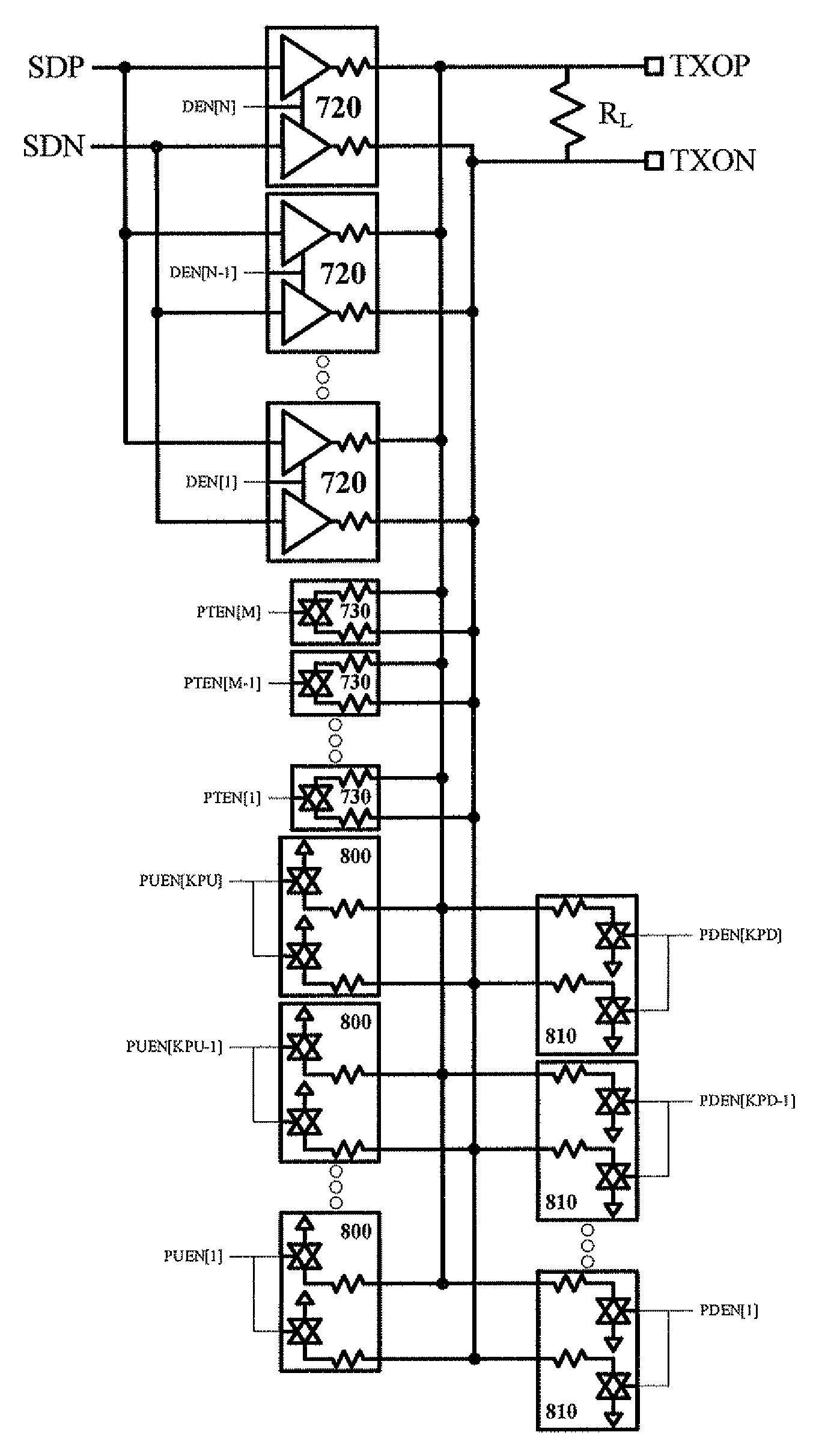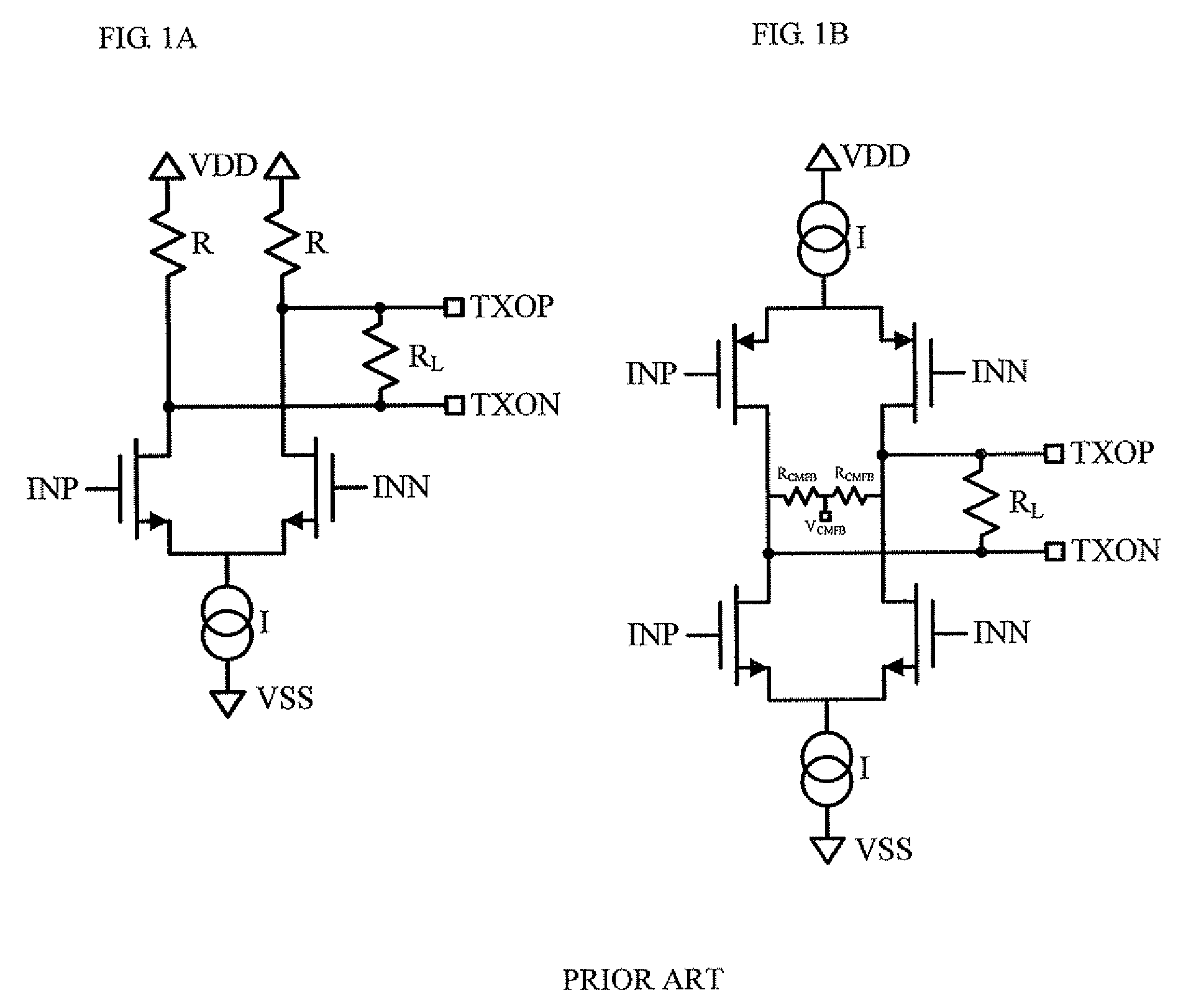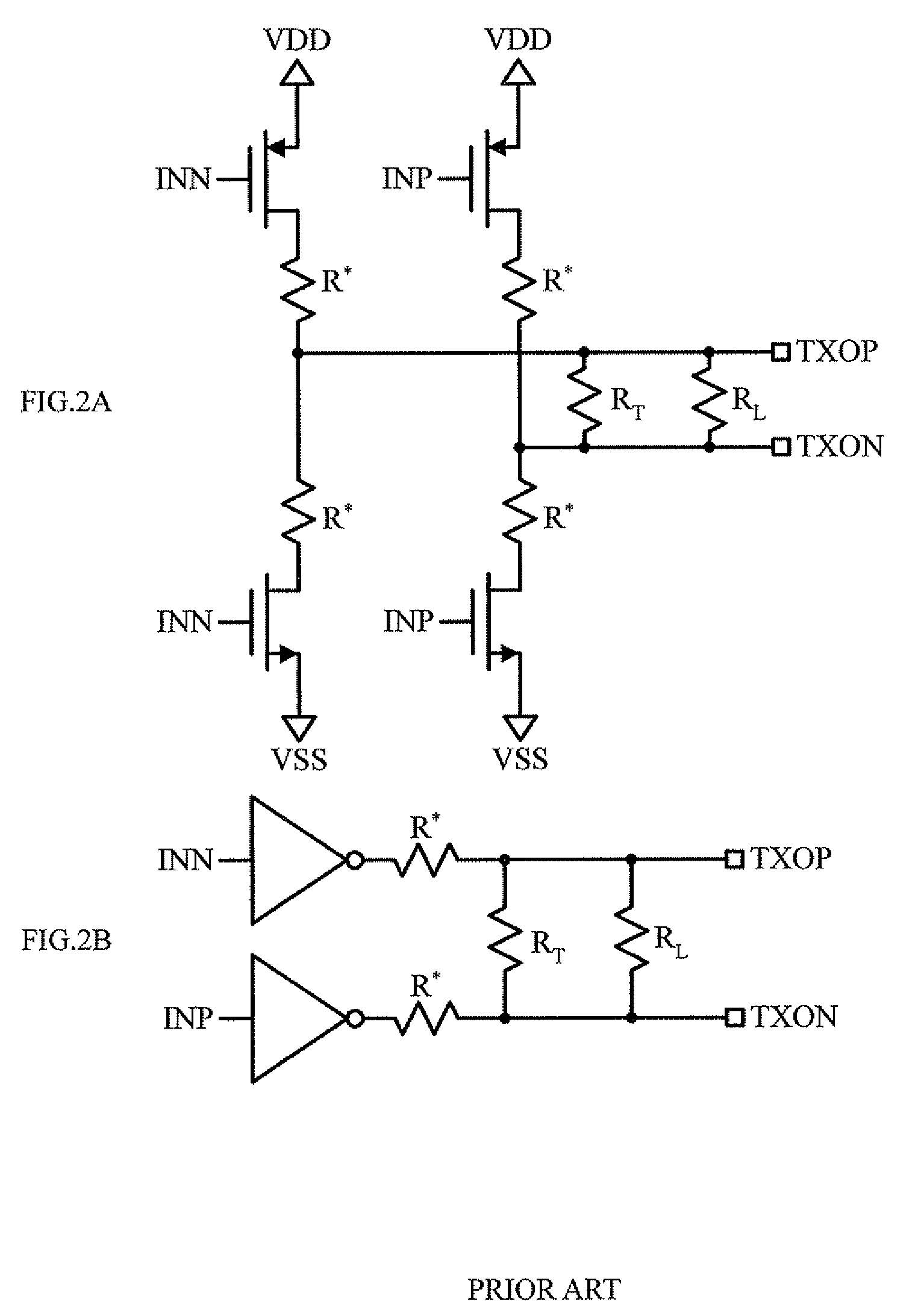Configurable voltage mode transmitted architecture with common-mode adjustment and novel pre-emphasis
a voltage mode and transmission architecture technology, applied in the field of transmitters, can solve the problems of significantly complicated board layout, prohibitively large on-chip inductors, and large bill of materials, and achieve the effect of facilitating pre-emphasis implementation and configurable output swing characteristics
- Summary
- Abstract
- Description
- Claims
- Application Information
AI Technical Summary
Benefits of technology
Problems solved by technology
Method used
Image
Examples
first embodiment
[0072]In a first embodiment, a configurable VM transmitter can be constructed from combinations of two basic “unit cells” (also referred to simply as “cells”), a drive unit cell 720 shown in FIG. 7B and a parallel termination unit cell 730 shown in FIG. 7C. An exemplary drive cell 720 includes two drive cell elements 700a,b (each shown in FIG. 7A as a cell element 700), each drive cell element operative to receive a common enable / disable control signal EN / ENB 726, and two resistors R* 728a,b, interconnected with an output port 724 as shown in FIG. 7B. An exemplary parallel termination cell 730 (FIG. 7C) includes two resistors 736a,b and a transmission gate 738 interconnected with an output port 732 as well as an enable / disable control port (EN) 734 connected to transmission gate 738. The enable / disable control port and the transmission gate form an “enable / disable function”.
[0073]Each drive cell element 700 implements a tri-state buffer with an input port (IN) 701, an output port (O...
second embodiment
[0110]If the number of enabled drive cells is denoted D, the number of enabled parallel termination cells is denoted PT, and the number of enabled pull-up and pull-down cells is denoted PU and PD, respectively, then the established resistive paths between VDD, VSS, and TXOP and TXON, loaded by a resistor RL when logic 1 is being transmitted is illustrated in FIG. 9. The differential and common-mode output characteristics of the second embodiment configuration are given in Equation 7. The derivative of VCM with respect to PU and PD is given in Equation 8.
[0111]ROdiff=2RD+PT+PU+PDVOdiff=2·VDD·DD+PT+PU+PD·RLRL+ROdiffRCM=R2(D+PU+PD)VCM=VDD2·D+2PUD+PU+PD(7)∂VCM∂PU=-∂VCM∂PD=VDD2·D+2PD(D+PU+PD)2(8)
The operating methodologies and the characteristics for this modified transmitter architecture are similar to those outlined for the basic architecture of the first embodiment (see Table 3), with the parameter PT replaced by PT+PU+PD.
[0112]It is apparent from Equations 7 and 8 that VCM ...
third embodiment
[0127]Note also that the description of this third embodiment thus far has specifically referred to the implementation of post-cursor pre-emphasis, whereas in the general case any form of pre-emphasis could be implemented.
[0128]Finally, it should be appreciated that the addition of pull-up and pull-down functions to the configurable VM transmitter of this third embodiment is straightforward through the addition of pull-up and pull-down cells to the VM transmitter of FIG. 10.
[0129]Operationally, similar to the first embodiment with pre-emphasis, the number of enabled drive cells (used for regular drive) is DREG, the number of enabled pre-emphasis unit cells (to drive emphasized bits, or serve as parallel termination for non-emphasized bits) is PRE, and the number of enabled parallel termination cells is PT. In this case, with reference to the expression for VOdiff in Table 3 for the configurable VM transmitter with basic pre-emphasis, for emphasized bits, parameter D is replaced by D...
PUM
 Login to View More
Login to View More Abstract
Description
Claims
Application Information
 Login to View More
Login to View More - R&D
- Intellectual Property
- Life Sciences
- Materials
- Tech Scout
- Unparalleled Data Quality
- Higher Quality Content
- 60% Fewer Hallucinations
Browse by: Latest US Patents, China's latest patents, Technical Efficacy Thesaurus, Application Domain, Technology Topic, Popular Technical Reports.
© 2025 PatSnap. All rights reserved.Legal|Privacy policy|Modern Slavery Act Transparency Statement|Sitemap|About US| Contact US: help@patsnap.com



